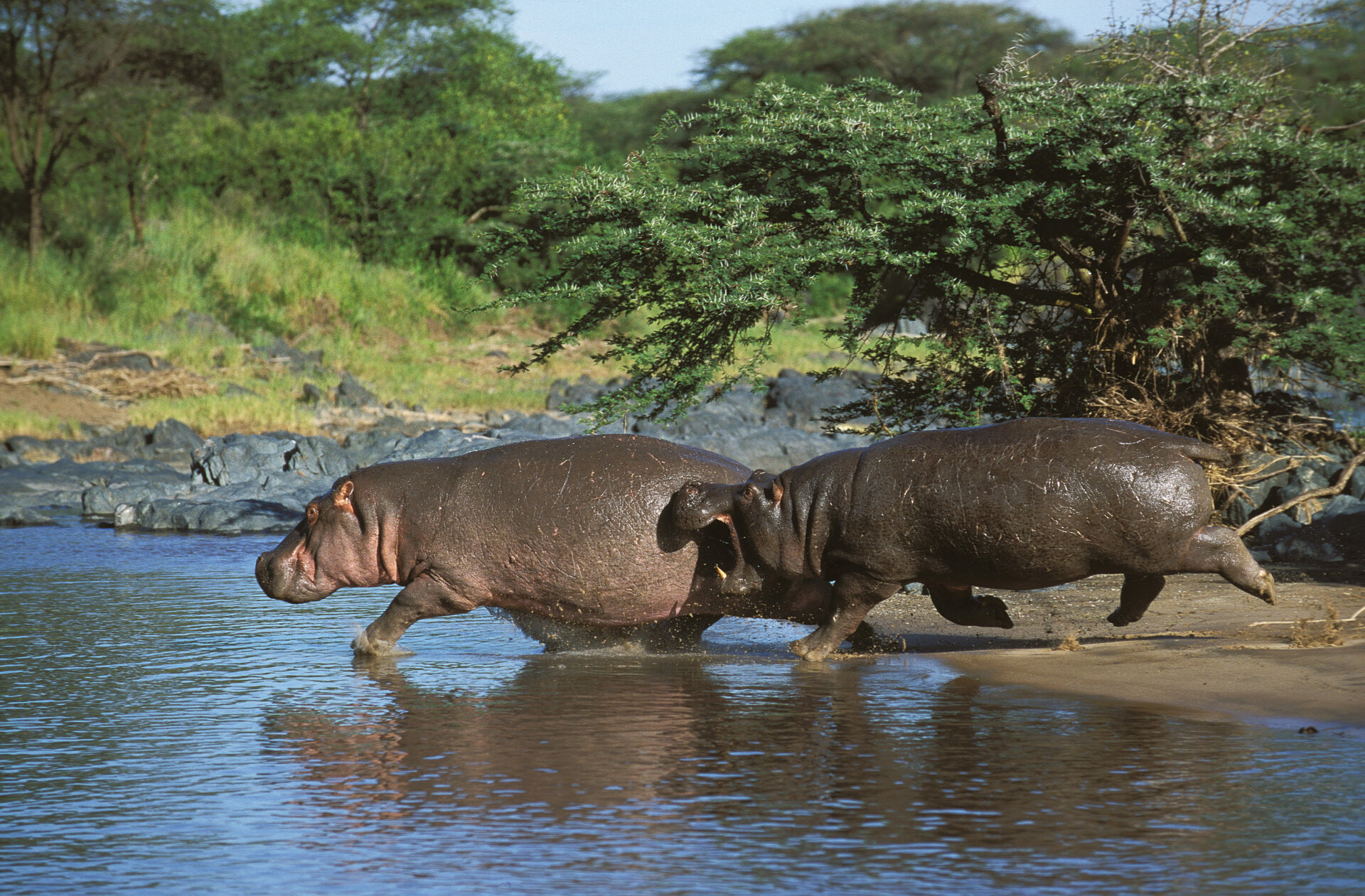Hippos are more limber than you may’ve previously thought. The fifth-heaviest land mammal is capable of becoming airborne while trotting at high speeds, according to a recent study out of the University of London’s Royal Veterinary College.
While analyzing footage of 169 different strides from 32 hippos, the researchers said they never spotted a gallop. Instead, the exceedingly muscular mammals stuck to a trot (or near-trot) — a pattern in which their feet strike the ground in diagonal pairs. While running, their trot featured a brief aerial phase; at peak speeds, the hippos reportedly spent about 15% of each stride totally airborne. This aerial phase had not, to the researchers’ knowledge, been previously reported.
Their predilection to trot is an “unusual pattern for large terrestrial mammals,” according to the researchers; rhinoceroses and giraffes, for example, employ different footfall patterns at different speeds. (However, it may not have always been unusual; long-necked dinosaurs, for example, may’ve employed a gait somewhat similar to hippos, per unrelated research.)
Hippos spend much of their days in the water, but around dusk they “lumber onto land,” per National Geographic, to graze on roughly 80 pounds of grass in darkness. Their aquatic and, at times, aggressive nature make the mammals tricky to study, said John R. Hutchinson, an evolutionary biomechanics professor at the Royal Veterinary College and the lead author of the study.
“Hippos aren’t often kept in captivity for easy access and even then tend to be hard to work with because they spend not so much time on land, are active at night, are hard to motivate and extremely dangerous if they are motivated, and there’s little training of them in captivity,” Hutchinson told Gizmodo. In the wild, “there are all kinds of problems accessing them (you basically have to get lucky and catch a rare shot of a fast hippo),” he added.
Hutchinson also acknowledged this is a “rather niche topic.”
“There wasn’t an answer to this question partly because few scientists had wondered (openly in papers, anyway),” he said. “But as my research heavily focuses on how heavy animals suffer major constraints to their locomotor abilities on land, I had to tackle it sooner or later.”














